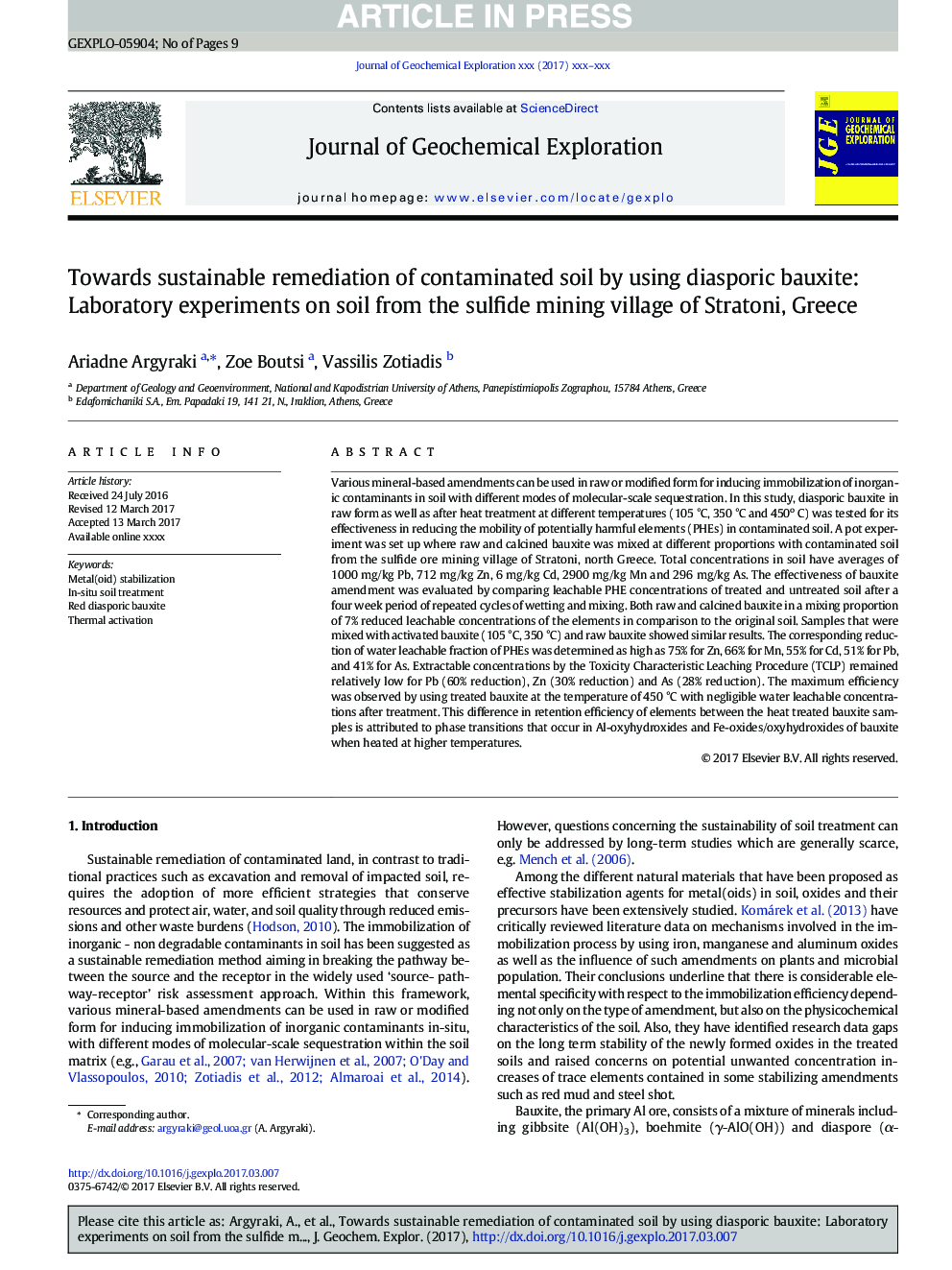| کد مقاله | کد نشریه | سال انتشار | مقاله انگلیسی | نسخه تمام متن |
|---|---|---|---|---|
| 8866212 | 1620875 | 2017 | 9 صفحه PDF | دانلود رایگان |
عنوان انگلیسی مقاله ISI
Towards sustainable remediation of contaminated soil by using diasporic bauxite: Laboratory experiments on soil from the sulfide mining village of Stratoni, Greece
ترجمه فارسی عنوان
در جهت اصلاح پایداری خاک آلوده با استفاده از بوکسیت دیاسپوریک: آزمایشهای آزمایشگاهی روی خاک از معدن سولفید معدنی استراتونی، یونان
دانلود مقاله + سفارش ترجمه
دانلود مقاله ISI انگلیسی
رایگان برای ایرانیان
کلمات کلیدی
موضوعات مرتبط
مهندسی و علوم پایه
علوم زمین و سیارات
زمین شناسی اقتصادی
چکیده انگلیسی
Various mineral-based amendments can be used in raw or modified form for inducing immobilization of inorganic contaminants in soil with different modes of molecular-scale sequestration. In this study, diasporic bauxite in raw form as well as after heat treatment at different temperatures (105 °C, 350 °C and 450o C) was tested for its effectiveness in reducing the mobility of potentially harmful elements (PHEs) in contaminated soil. A pot experiment was set up where raw and calcined bauxite was mixed at different proportions with contaminated soil from the sulfide ore mining village of Stratoni, north Greece. Total concentrations in soil have averages of 1000 mg/kg Pb, 712 mg/kg Zn, 6 mg/kg Cd, 2900 mg/kg Mn and 296 mg/kg As. The effectiveness of bauxite amendment was evaluated by comparing leachable PHE concentrations of treated and untreated soil after a four week period of repeated cycles of wetting and mixing. Both raw and calcined bauxite in a mixing proportion of 7% reduced leachable concentrations of the elements in comparison to the original soil. Samples that were mixed with activated bauxite (105 °C, 350 °C) and raw bauxite showed similar results. The corresponding reduction of water leachable fraction of PHEs was determined as high as 75% for Zn, 66% for Mn, 55% for Cd, 51% for Pb, and 41% for As. Extractable concentrations by the Toxicity Characteristic Leaching Procedure (TCLP) remained relatively low for Pb (60% reduction), Zn (30% reduction) and As (28% reduction). The maximum efficiency was observed by using treated bauxite at the temperature of 450 °C with negligible water leachable concentrations after treatment. This difference in retention efficiency of elements between the heat treated bauxite samples is attributed to phase transitions that occur in Al-oxyhydroxides and Fe-oxides/oxyhydroxides of bauxite when heated at higher temperatures.
ناشر
Database: Elsevier - ScienceDirect (ساینس دایرکت)
Journal: Journal of Geochemical Exploration - Volume 183, Part B, December 2017, Pages 214-222
Journal: Journal of Geochemical Exploration - Volume 183, Part B, December 2017, Pages 214-222
نویسندگان
Ariadne Argyraki, Zoe Boutsi, Vassilis Zotiadis,
